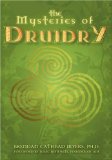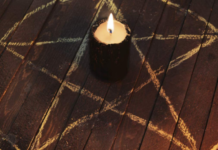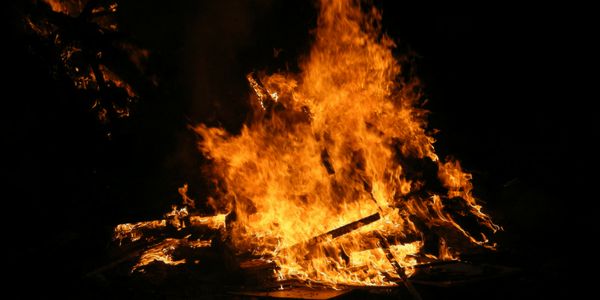
Mysteries of Druidry
, by Brendan Cathbad Myers, Ph. D.
New Page Books, 1564148785, 236 pp. (incl. bibliography and index), 2006
I first met Brendan at a Pagan pub moot in Toronto a few years ago. In conversation his love and commitment to Druidry became immediately evident. I was among the attendants at the Toronto launch of The Mysteries of Druidry, where he read from the preface, and sold and signed books. I was pleased and honoured to receive a copy of this book for review, and looking forward to engaging in the rest of the material. His unique voice carries throughout the text, and at times it was as if I heard his voice speaking passages as I read.
Right from the preface it becomes clear that The Mysteries of Druidry was written from a place of love and deep respect for the Celtic tradition, the land and its spiritual ancestors. The first chapter follows a question and answer format, giving an overview of popular themes in Celtic history, culture and spirituality, following this is a summary of Druidic mysteries, magic and practice. Another chapter is dedicated to clann, or grove building, leadership and fostering community.
Myers defines Druidry as “a spirituality of dwelling in and with the land, sea and sky”, noting that the “needs of humanity are not ignored, for it is a spirituality of tribe and family, of personal empowerment, and of social justice”,1 important themes which are impressed upon the reader throughout the text.
In addition to reconstructing the past, Myers also offers a fascinating history of modern Druidry, its sources, texts and people. He notes that “[e]very form of modern Druidry and Celtic Mysticism seems to be driven by a quest for spiritual identity, which is one form of the impulse to “know yourself”. Some people find that by identifying themselves as Celtics, as envisaged by historical discovery or even imaginative fantasy, then will “know themselves”…People need roots and traditions, which only a connection to family, society and history can provide”, and so, as he insightfully remarks: “to [his] mind, what matters most is the pursuit of a worthwhile life”2 – a very agreeable conclusion.
Myers capably demonstrates his ability to frame Celtic spirituality in a modern context, providing exercises and rites which are practical for today’s world. He weaves retellings of classic tales from ancient Celtic and post-Celtic literature with more modern inspirations from W. B. Yeats, J. R. R. Tolkein and Joseph Campbell.
Some may have difficulty with statements such as “…the only people among us today who would qualify [as Druids] are those who have at least a Bachelor’s degree, if not a Master’s as well, from a recognized university”.3 However, when the Druid class is placed in context as being a scholarly class in Celtic society (among other things) requiring an extensive training program, it does make sense. As noted earlier in the text, “[a] Druid is a “professional” because Druidry requires the application of skill and knowledge in the service of certain social responsibilities”,4 and a convincing argument is made.
Additionally, Myers’ stance on self-initiations confronts another uncomfortable truth, namely, that “[s]elf-initiation does not make you automatically a member of a certain community”; however, he does allow that “it can make you ready to join one”.5 Again, I’m inclined to agree. Too often one comes across claims of self-initiation into a mystery tradition; however, without recognition in the community, the validity of this initiation does not carry much weight, though it can provide a foundation upon which to connect and establish oneself.
I do have a few criticisms: the book is repetitive in places with a few quotes reused several times, and there are a few typographical errors and spelling inconsistencies in certain Celtic words, but these do not detract from the text overmuch.
Myers admirably marries Celtic history and lore with contemporary Druidic and neo-Pagan practice and belief, making The Mysteries of Druidry a good introduction to the path.








